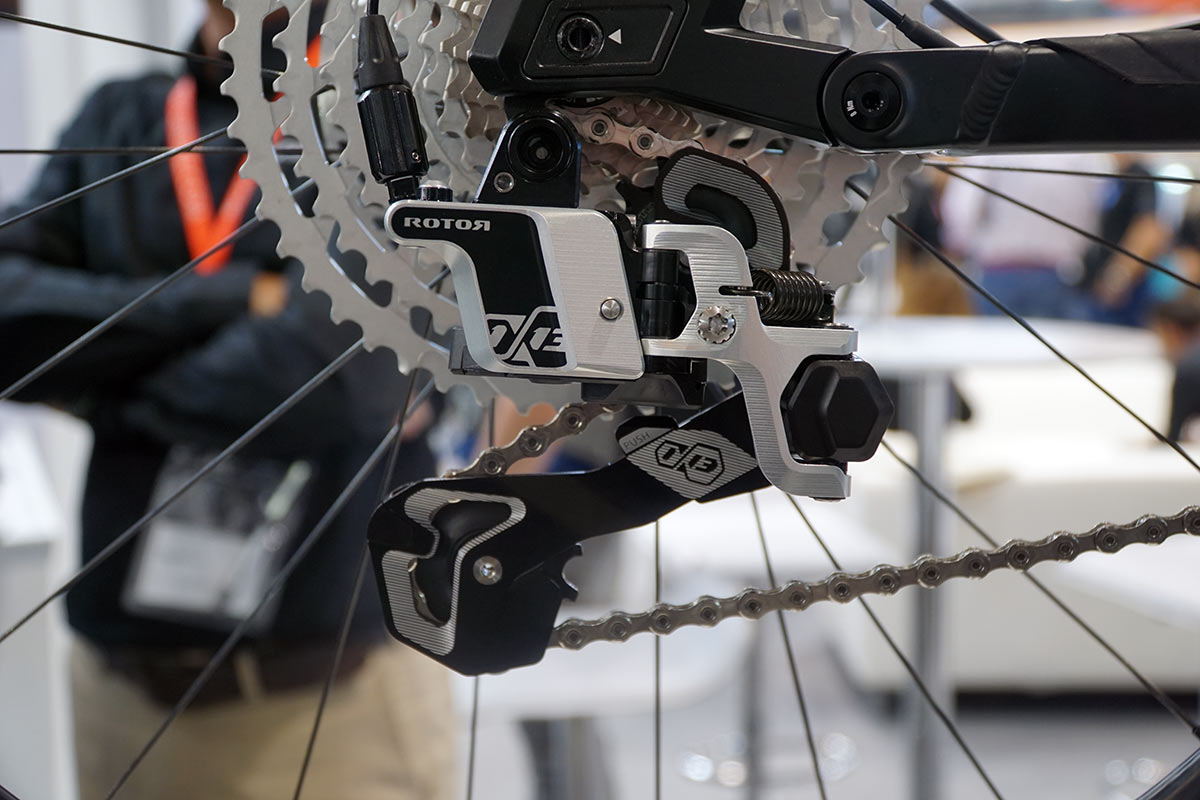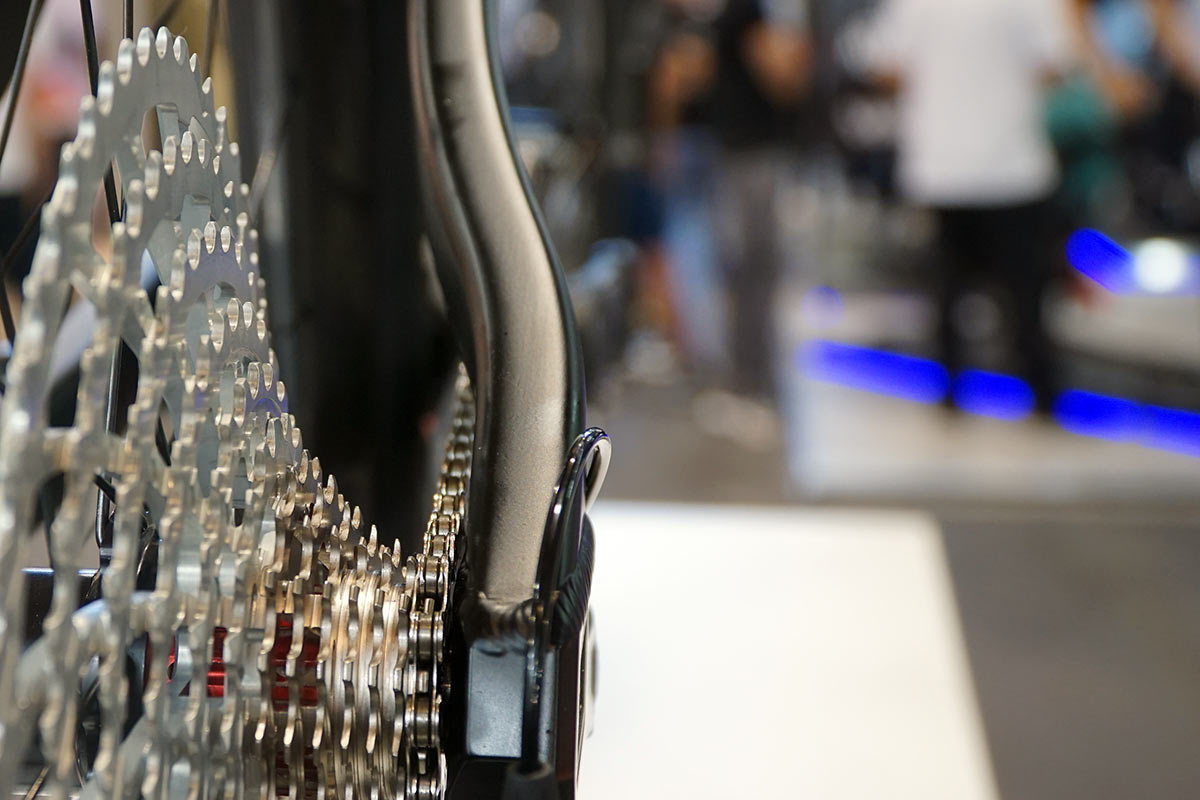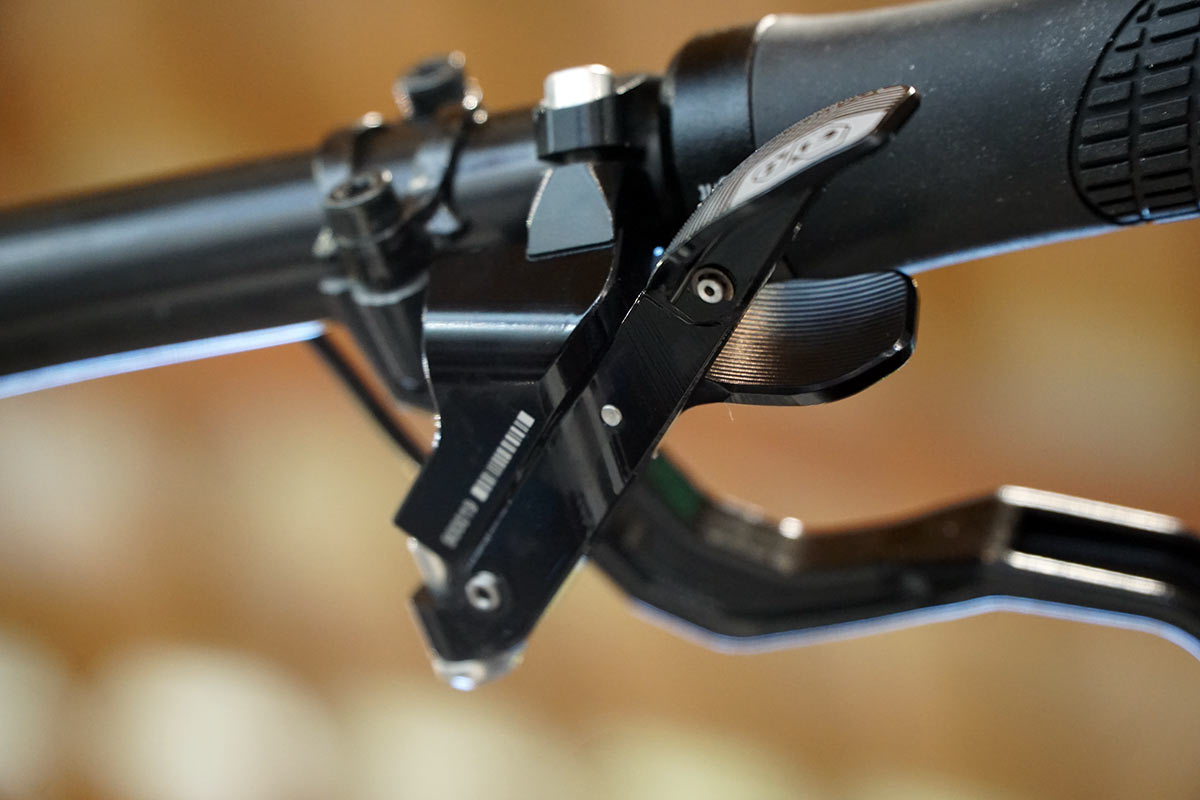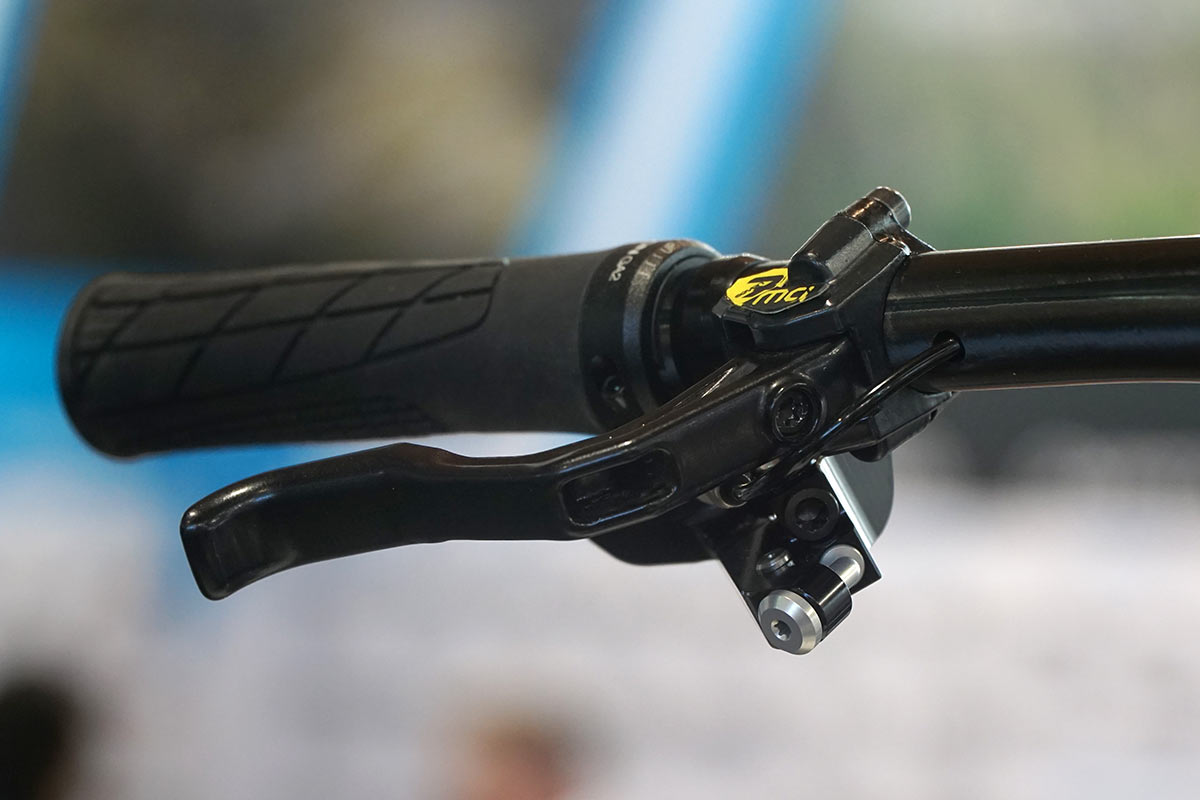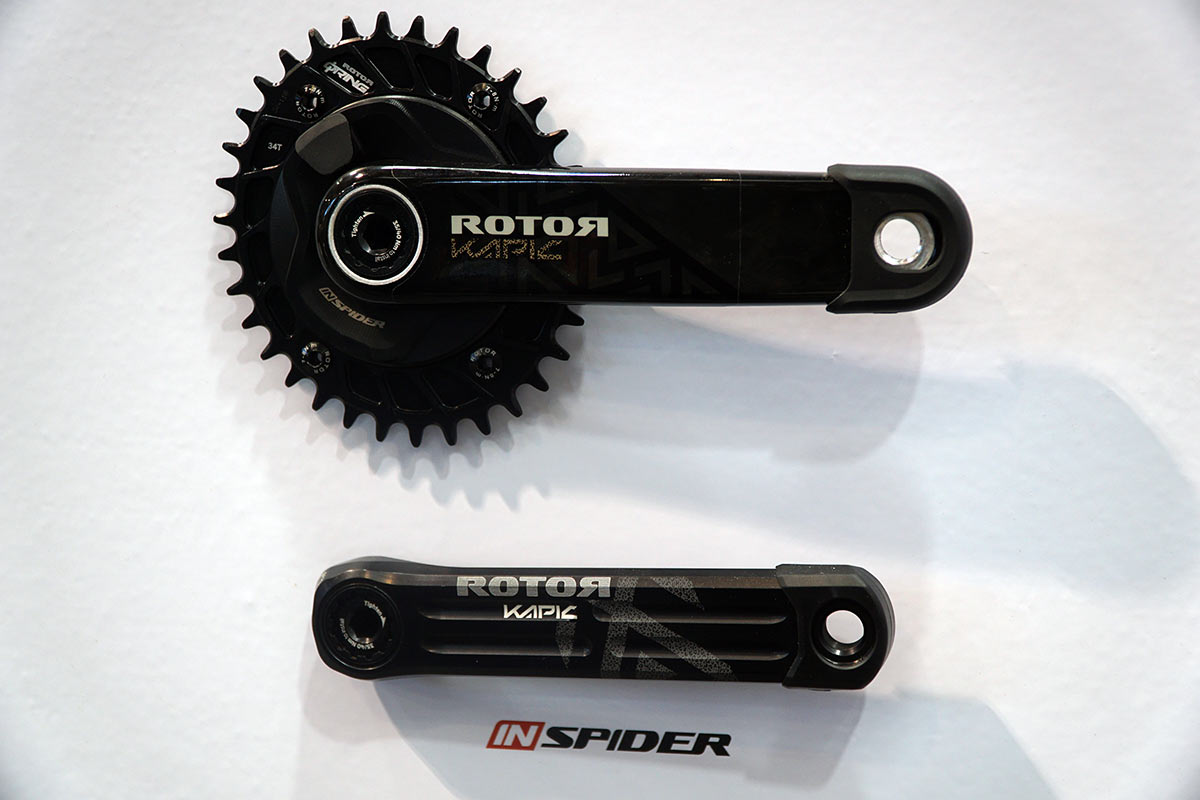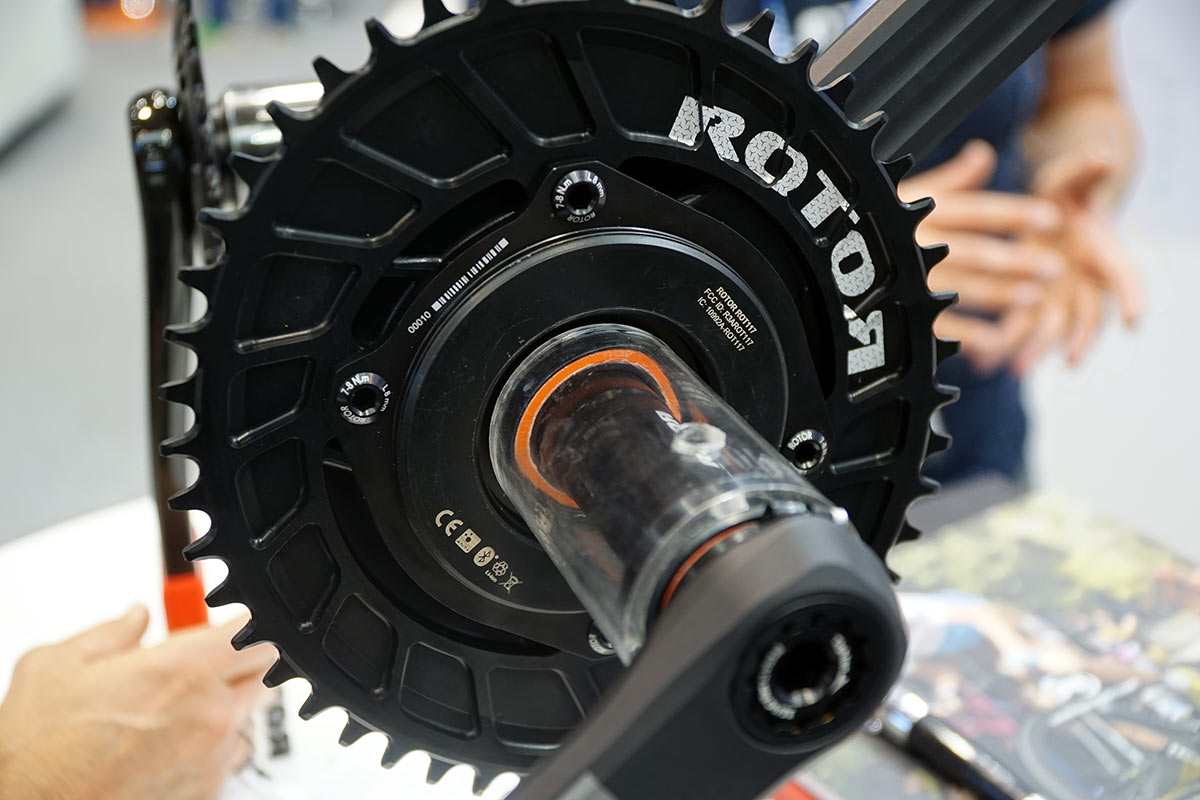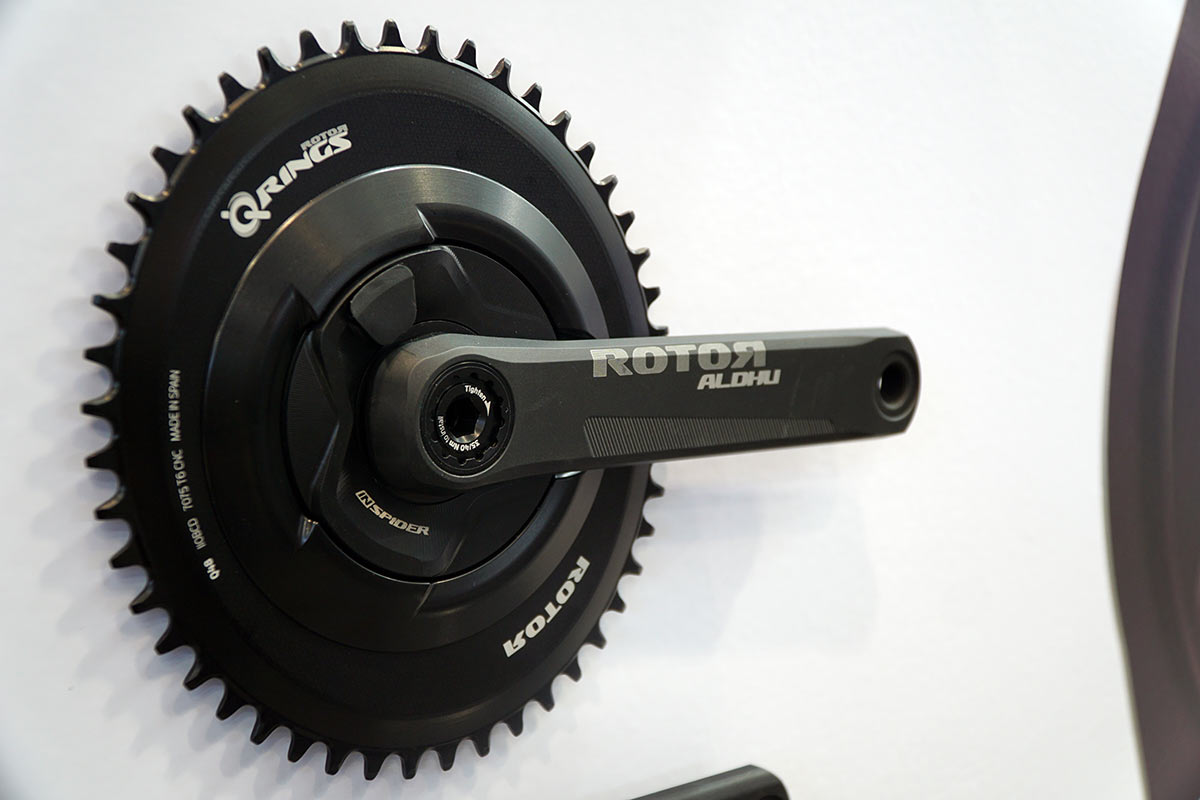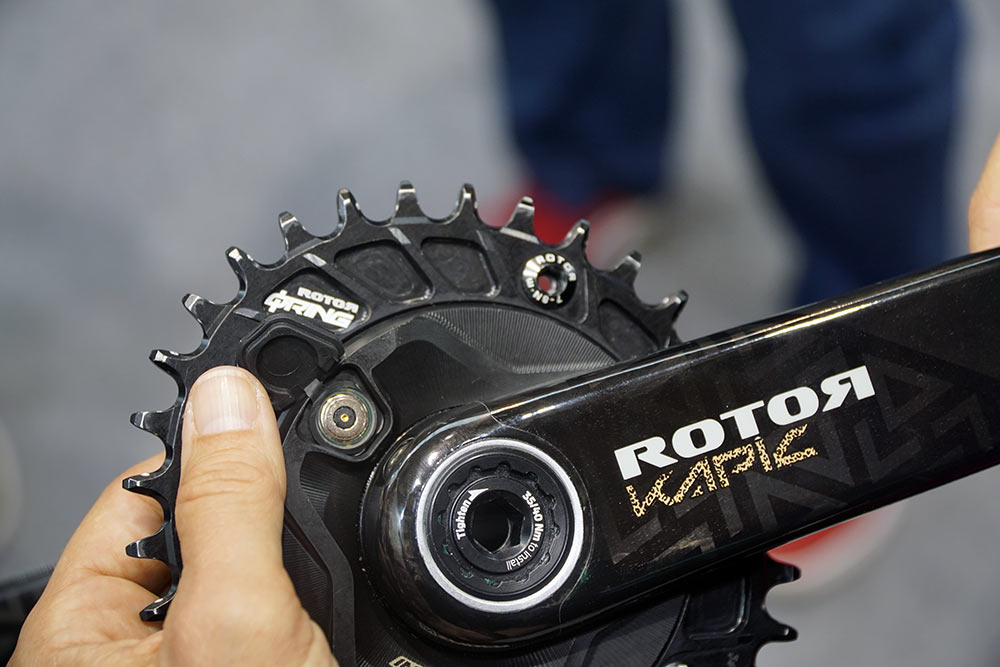First shown last Sea Otter, the Rotor 1×13 hydraulic shifting mountain bike group is finally in production and shipping soon. Not interested in switching away from SRAM or Shimano? There’s still something here for you. They’re also offering a 1×12 group, which has the benefit of using a standard Shimano HG freehub body. And with an 11-52 cassette, you barely lose any range over the latest 12-speed groups from the big boys. What you do lose, though, is weight, and a good bit of it…
Let’s start with the mix and match options, then we’ll get into the full group. If you like the idea of a lightweight hydraulic shifting group, you could run their shifter and derailleur with a SRAM Eagle cassette. Or, if you like SRAM Eagle shifter and derailleur, the spacing is the same on Rotor’s 12-speed cassette on a SRAM Eagle drivetrain. So, you could drop a about 30g if you’re running the biggest cassette. Or you could save a lot more if you’re looking for less range and tighter gear steps…here’s all the weights:
If you want the maximum range, you’ll need to go with their 1×13 setup, which means using their rear hub. Why? Because while it uses a standard HG freehub, the hubshell is slightly narrower because the 10-tooth cog hangs off the end of the freehub, and the axles are reworked to fit in Boost frames. For U.S. customers, you can have Rotor get a custom rear wheel made through Wheelbuilders.com with various rims.
The shifting is a closed system, which has been finalized over an open system they were considering when we saw the group in April. Technically, this means it has a nearly infinite service life since contaminants can’t enter the system, but they recommend annual bleeds and fills just to be safe.
The lever looks like a dual system like most other brands, but in fact is just a single push-or-push-further design. Push it a little bit to release, and push further to “pull” the derailleur onto a larger (easier) cog. The smaller secondary lever is there as an alternate thumb position that’s easier to reach when you’re way back off the saddle during aggressive descents.
The back side has a reach adjust screw that lets you set the starting position for the shift lever. Retail prices are $999 for the shifter and derailleur alone, or €2,549 / £2,399 / $2,899 (Performance Kit), €1,799 / £1,699 / $2,099 (Super Light Kit) and €1,399 / £1,299 / $1,599 (Mountain Ready Kit). Check out our Sea Otter coverage for additional details and video.
Rotor InSpider universal power meter
Thus far, Rotor has offered their InPower spindle-based power meter, which could be mixed and matched with strain gauges inside the drive side crank arm. This gave you the option of measuring left, right, or both. The new InSpider offers a third option and sits between the two in price.
Since it’s only on one side, it offers virtual left side power, but has some interesting tech that helps it compensate for temperature and other fluctuations. The system uto calibrates in real time, so there are no gaps in your data (they say some spider-based power meters need will periodically restart to re-calibrate themselves mid-ride).
Aero crown available for triathlon chainrings, and the design can be put on any of their current direct-mount road or mountain bike cranksets, with 1x or 2x chainrings.
Claimed weight for the spider is 149g, which allows them to build up the lightest (their claim) Power Meter MTB crankset at 506g with their Kapic Carbon.
Works with Super Boost, Boost and “original” mountain bike frames, but the inside does stick out slightly, so you’ll want to check around the BB area to make sure there’s adequate clearance.
It’s rechargeable using a magnetic connection. They rate it at 225 hours of run time with a three hour full recharge time.
Retail is $649 for the spider, plus whichever crankset you want to put it on.
